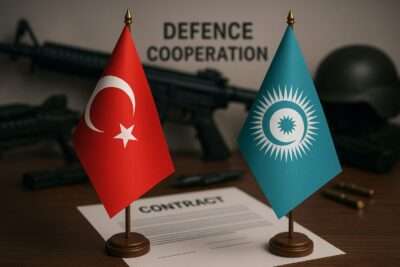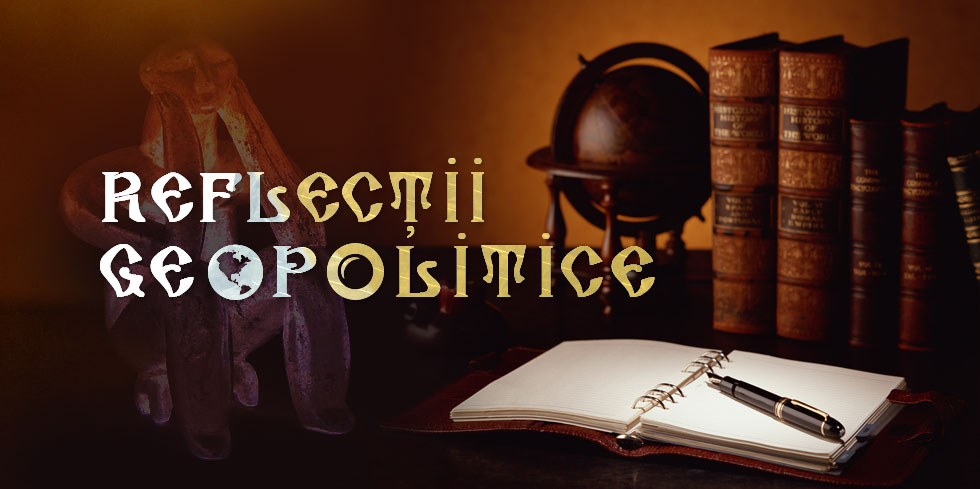
Executive Summary
The Organisation of Turkic States (OTS) launched a multilateral defence industry cooperation platform that represents Ankara’s strategic initiative to expand its economic and geopolitical influence in Central Asia and the South Caucasus.
Coinciding with the 17th International Defence Industry Fair (IDEF) in Istanbul, this development supports Turkey’s ambitions to merge a defence-industrial bloc rooted in Turkic cultural ties.
Although the platform presents commercial and strategic advantages, substantial limitations endure, such as financial constraints among OTS members, institutional disparities, and the predominant impact of Russia, China, and Iran in the region.
Key Takeaways
- Turkey is leveraging the OTS and IDEF 2025 to institutionalise its role as a defence exporter and security partner across Turkic states.
- Economic constraints, particularly in Central Asia and within Turkey itself, limit the capacity to operationalise defence integration.
- Russia, China, and Iran are likely to perceive OTS defence cooperation as a threat to their strategic interests, increasing regional tensions.
Background Information
The 1st Meeting of the Heads of Defence Industry Institutions of the Organisation of Turkic States (OTS) occurred on 23 July 2025 in Istanbul, alongside the International Defence Industry Fair (IDEF 2025). The event brought together senior officials from Turkey, Azerbaijan, Kazakhstan, Kyrgyzstan, and Uzbekistan.
The participants discussed institutionalising a multilateral platform for defence industry collaboration under the OTS framework. Turkey has established itself as both a coordinator and supplier, indicative of its expanding export potential in military hardware, particularly UAVs.
IDEF 2025 attracted participants from 54 countries and hosted 141 signing ceremonies for defence-related contracts, underscoring Ankara’s intention to scale its global presence in military manufacturing and procurement.
Geopolitical Scenario
Turkey’s strategy focuses on leveraging a shared Turkic identity to establish defence and industrial alignment. This reinforces Ankara’s position as a regional power, free from reliance on Western, Russian, or Chinese frameworks.
This strategy poses a challenge to existing Eurasian security frameworks, including the Collective Security Treaty Organization (CSTO) and the Shanghai Cooperation Organisation (SCO), while presenting an alternative to the Russian and Chinese defence-industrial complexes.
Incorporating Central Asian nations into a Turkish-led defence system bears strategic implications. Azerbaijan, a major Turkish military ally, provides Ankara with access to the Caspian and Central Asian regions. Kazakhstan and Uzbekistan, while formally engaged in modernisation efforts, maintain strategic dependence on Russia and China for defence procurement, energy, and infrastructure. Their engagement with the OTS platform might be circumspect to prevent alienating these partners.
Iran has an interest in regional power balances and in the regional defence sector. Tajikistan, not part of the OTS because of cultural and linguistic differences, houses Iranian drone production facilities, showing Tehran’s separate military involvement in Central Asia.
Kyrgyzstan’s acquisition of Turkish drones is a tangible outcome of its partnership with Turkey and reflects Ankara’s plan to increase defence exports in Central Asia.
A larger Turkish military presence may provoke reactions from Russia, China, and Iran, possibly resulting in a divided and militarised security situation. In addition, institutional and industrial limitations within Central Asian states, coupled with political sensitivities and external pressures coming from Moscow and Beijing, pose challenges to Central Asian republics’ integration into a Turkic defence bloc.
Closer defence ties with Turkey might draw attention from Western partners, notably the United States and the European Union, given their concerns about the destabilising consequences of increased military activity in a region of importance to global commerce and energy supplies.
Defence cooperation could internally bolster executive control within OTS member states, particularly in regimes pursuing military modernisation to merge political power. This risks the securitisation of domestic policy and could reduce transparency or exacerbate repression in countries where civil-military oversight remains weak.
Indicators to Monitor
- Growth in Turkish military exports to OTS countries, especially UAV systems, joint R&D, and licencing agreements.
- New announcements or investments related to defence production facilities within Central Asian OTS member states.
- Russian or Chinese diplomatic or military responses to Turkish engagements, including counter-deals or pressure on member states.
- Increasing cooperation between Tajikistan and Iran, including possible efforts to balance Turkish influence.
- Statements from EU or US officials regarding regional security or military developments linked to the OTS framework.
Conclusion
The OTS defence cooperation platform, spearheaded by Turkey and highlighted by the IDEF 2025 fair, suggests a realignment of regional defence relations in Central Asia and the South Caucasus.
Ankara wants to use shared culture to create cooperation, security, and business opportunities, but limited money, opposition from other countries, and different goals within the group pose significant challenges.
Strategic monitoring should concentrate on the tangible results of cooperation, responses from external parties, and institutional changes in participating countries.
